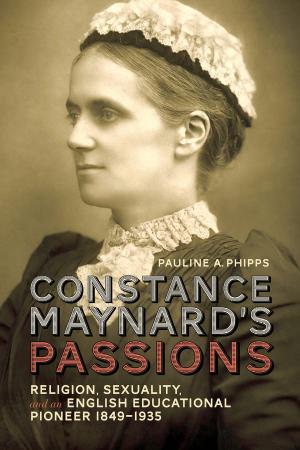Revolutionary Vanguard
The Early Years of the Communist Youth International 1914-1924
Nonfiction, Social & Cultural Studies, Political Science, Government, Communism & Socialism, International| Author: | Richard Cornell | ISBN: | 9781442637696 |
| Publisher: | University of Toronto Press, Scholarly Publishing Division | Publication: | December 15, 1982 |
| Imprint: | Language: | English |
| Author: | Richard Cornell |
| ISBN: | 9781442637696 |
| Publisher: | University of Toronto Press, Scholarly Publishing Division |
| Publication: | December 15, 1982 |
| Imprint: | |
| Language: | English |
The monolithic nature of the communist movement during the Stalinist period overlay pluralist tendencies. These were suppressed in the 1920s, though they were to re-emerge after Stalin's death.
The history of the Communist Youth International is revealed in this volume as an important example of the 'autonomist' tendencies in the communist movement after the First World War. The experience of the CYI also demonstrates that differences between Leninist and Stalinist eras were of degree, rather than of kind. Under Lenin, organizational principles and practices were introduced that gave to the new communist movement a distinct, authoritarian cast.
Cornell considers the relevance, in the development of radical movements among the young, of such qualities as untempered idealism, a predisposition to embrace the most radical alternatives for social change, and a self-assertiveness or rebelliousness directed against traditional adult teachings. He shows how these qualities were to lead, after the First World War (and more recently), to conflicts between radical, ideologically orthodox youth and more pragmatic adult party leaders.
In introducing their new kind of radicalism, the young communists of Europe in 1919 considered themselves to be the most revolutionary element among revolutionaries – the highest form of 'revolutionary vanguard.' Moscow did not agree.
The monolithic nature of the communist movement during the Stalinist period overlay pluralist tendencies. These were suppressed in the 1920s, though they were to re-emerge after Stalin's death.
The history of the Communist Youth International is revealed in this volume as an important example of the 'autonomist' tendencies in the communist movement after the First World War. The experience of the CYI also demonstrates that differences between Leninist and Stalinist eras were of degree, rather than of kind. Under Lenin, organizational principles and practices were introduced that gave to the new communist movement a distinct, authoritarian cast.
Cornell considers the relevance, in the development of radical movements among the young, of such qualities as untempered idealism, a predisposition to embrace the most radical alternatives for social change, and a self-assertiveness or rebelliousness directed against traditional adult teachings. He shows how these qualities were to lead, after the First World War (and more recently), to conflicts between radical, ideologically orthodox youth and more pragmatic adult party leaders.
In introducing their new kind of radicalism, the young communists of Europe in 1919 considered themselves to be the most revolutionary element among revolutionaries – the highest form of 'revolutionary vanguard.' Moscow did not agree.















